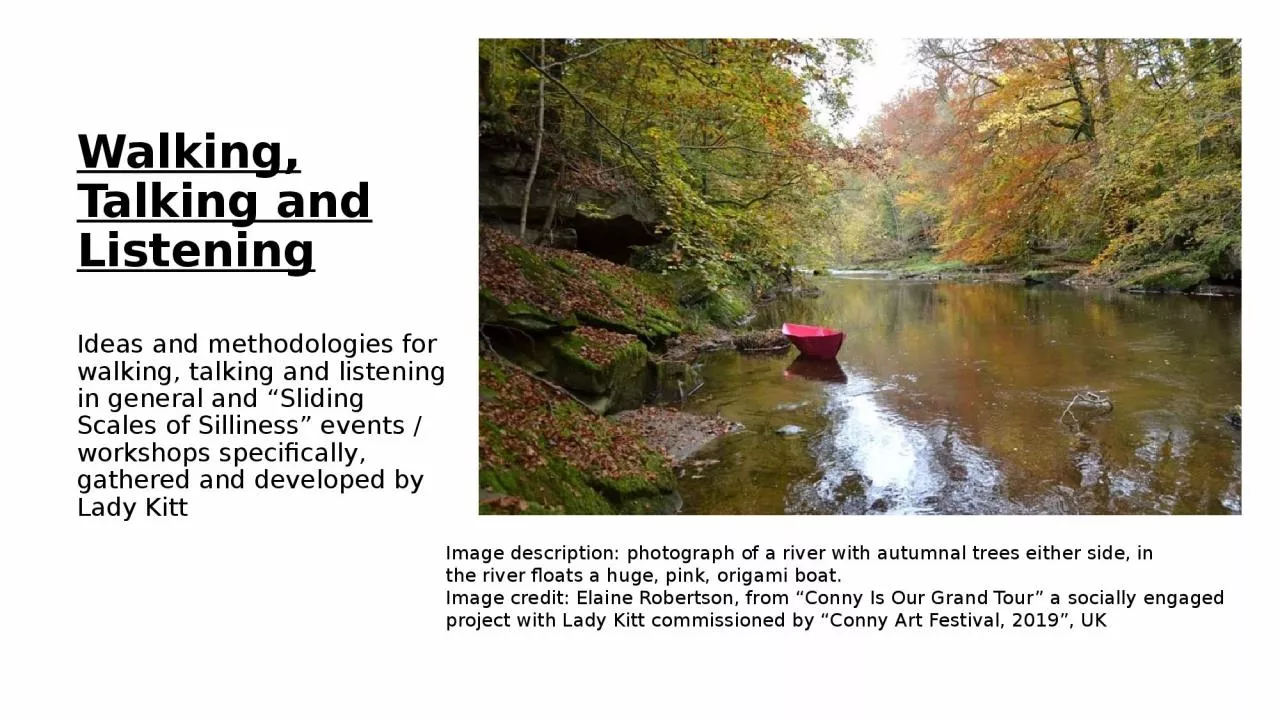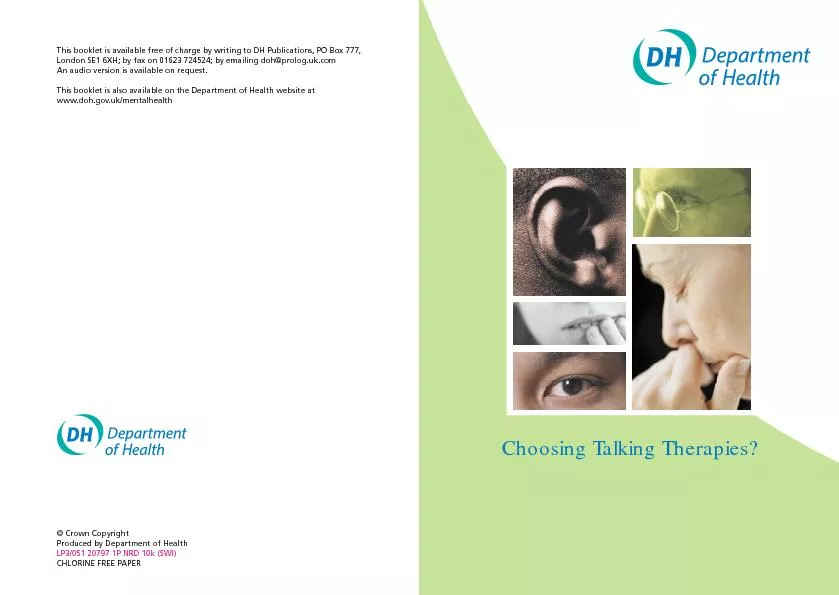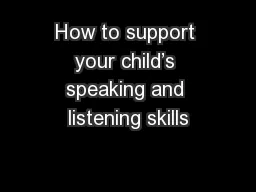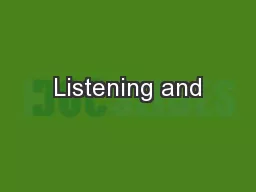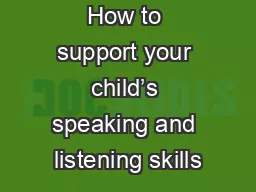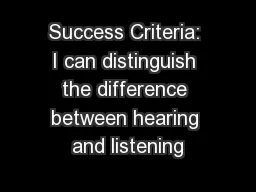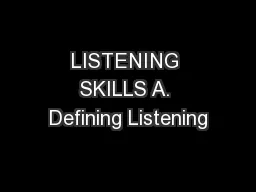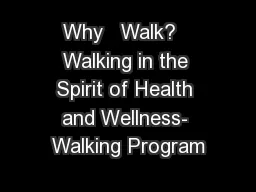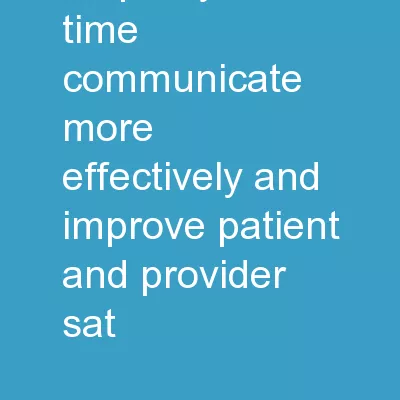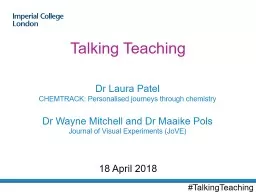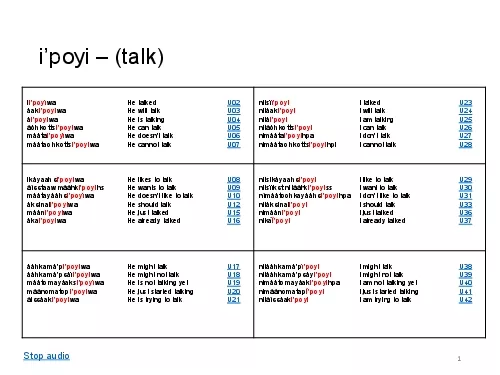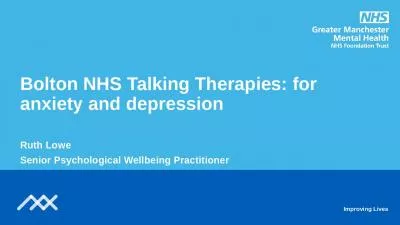PPT-Walking, Talking and Listening
Author : CuteAsACupcake | Published Date : 2022-08-04
Ideas and methodologies for walking talking and listening in general and Sliding Scales of Silliness events workshops specifically gathered and developed by Lady
Presentation Embed Code
Download Presentation
Download Presentation The PPT/PDF document "Walking, Talking and Listening" is the property of its rightful owner. Permission is granted to download and print the materials on this website for personal, non-commercial use only, and to display it on your personal computer provided you do not modify the materials and that you retain all copyright notices contained in the materials. By downloading content from our website, you accept the terms of this agreement.
Walking, Talking and Listening: Transcript
Download Rules Of Document
"Walking, Talking and Listening"The content belongs to its owner. You may download and print it for personal use, without modification, and keep all copyright notices. By downloading, you agree to these terms.
Related Documents

